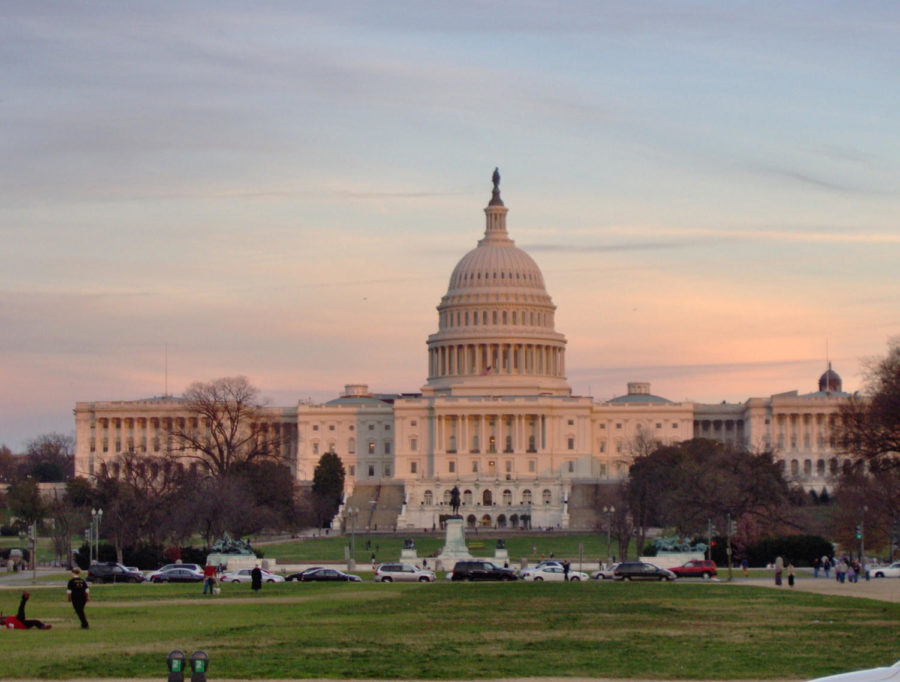Pressure on Biden to extend the moratorium grows
The federal moratorium on student loan payments will end Sept. 30, while the notion of a further extension is growing.
July 30, 2021
On March 27, 2020, Congress passed the Coronavirus Aid, Relief, and Economic Security (CARES) Act, which included a variety of bills intended to provide relief to the American public during the pandemic and quarantine. Included in the CARES Act was a moratorium on federal student loan payments. This bill also temporarily dropped the interest rate for student loans to 0 percent and ceased the collection of defaulted loan payments, giving many struggling college graduates a chance to catch up on defaulted payments and work toward paying off their education.
The moratorium is currently set to end Sept. 30, meaning graduates will be required to resume making payments Oct. 1.
Iowa State’s Director of the Student Financial Aid Office Roberta Johnson offered some ideas to keep students in better financial shape.
“If students don’t already know, they should find out who their current loan servicing agent is,” Johnson said. “The Department of Education holds the paper on the loan, but one of these contractors is actually going to be the servicing agent,” Johnson said. ”Students need to go out and confirm with the servicer their current address, telephone number, email, all of that sort of thing.”
Students can visit the Iowa State financial aid website to find out what servicing agent their loans are through.
“Graduates also should confirm their loan balances and really make sure they understand how much they owe,” Johnson said. “They need to understand the status of their loans. For students who have previously been in repayment and need to reengage, they need to double check that their bank info is still accurate, particularly if they are having automatic payments deducted to pay on their student loans.”
As for students who have not yet started making payments, Johnson recommends looking into what options are available.
“Students who have not made any payments yet just need to know what their payment options are,” Johnson said. “… Do they want to go into a standard repayment and pay it off in 10 years? Do they want to utilize the extended payment plans, which can lower monthly payments but increase the amount of interest and their total payments over the life of their loans?”
Johnson also pointed out there is not a prohibition on students making a payment on their loans now if they choose to, it’s just not required. So for many students, it might make sense to start making payments on their loans and get into a habit of making those payments on their loan.
The biggest challenge for the Office of Student Financial Aid this October will be getting the word out to Iowa State graduates that they will be required to resume paying student loans. Unfortunately, Iowa State often does not have updated contact information for graduates, meaning the most up-to-date information is likely on file with whichever loan servicing agent the graduate is using.
When it comes to these graduates, the Office of Student Financial Aid is mostly limited to universal announcements for reaching and helping graduates prepare for the end of the moratorium.
Students who graduated during the moratorium are more easily reachable by Iowa State.
“That’s where we can have the most impact because hopefully, we still have some addresses that work for those students, just so we can remind them [that] while they didn’t have to enter repayment after they graduated because of the moratorium they’re gonna have to be in that space,” Johnson said.
Since its beginning, the freeze has been extended multiple times, twice by former President Donald Trump and again by Biden on his first day in office. There has been a lot of talk throughout Congress of extending the moratorium yet again to help smooth the transition into a functioning financial system.
Richard Cordray, chief officer of financial aid for the U.S. Department of Education, wants the moratorium extended to Jan. 31 to give the U.S. Office of Financial Aid time to work toward some hefty reforms. Cordray claims this extension would give time to perform a 90-day audit on the Public Loan Forgiveness Program and expand relief for borrowers, among other things.
Sen. Elizabeth Warren and Sen. Chuck Schumer argue that Biden should cancel $50,000 of debt per borrower. Biden has previously stated he could support up to $10,000 of loan forgiveness per borrower, making the $50,000 request appear lofty.
The U.S. Office of Financial Aid already faces many issues upon the end of the moratorium, one reason being that when the moratorium began, many employees of the office were furloughed, leaving the office understaffed to deal with all the issues that may come about when payments resume.
Another issue the office will have to face is that two of the five servicers in the Department of Education who are contracted to handle student loan borrower accounts have announced they will not be renewing their contracts at the end of this year. This means the millions of accounts handled by these servicers will need to be transferred to other servicers.
Johnson offered this analogy to explain the dilemma: The Department of Education and its financial aid division is like a massive truck halted by the pandemic. After months of sitting out, it will take a lot of energy to get this truck moving again.
Regardless of when the moratorium on student loan payments ends, students need to be prepared to find out about their status with their servicing agent and how to resume making payments. Of course, there’s potential for loan forgiveness, promised by Biden, but graduates would be better off being prepared for less pleasant outcomes.







